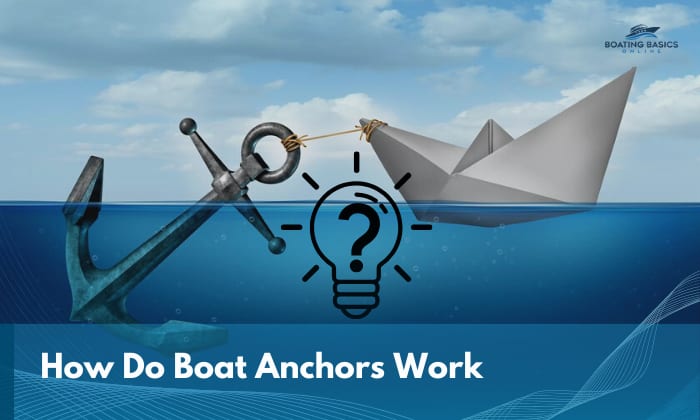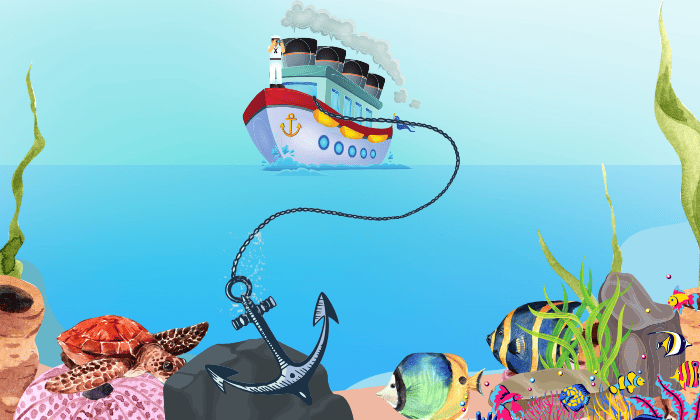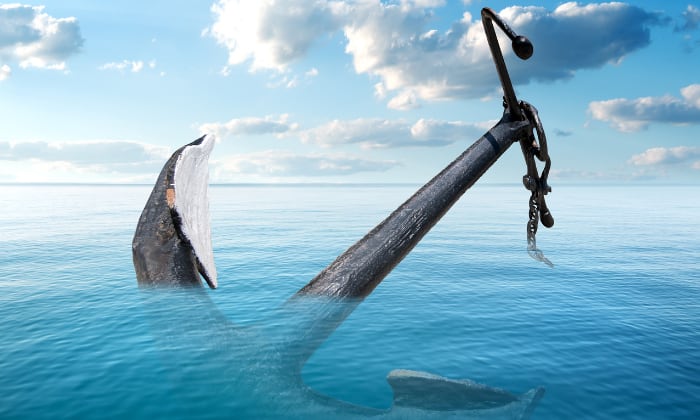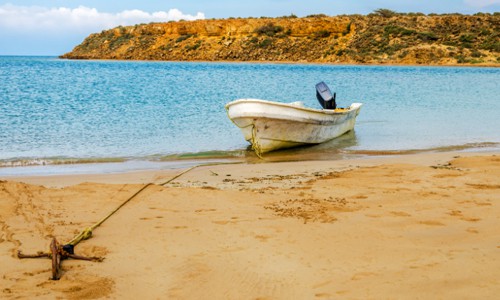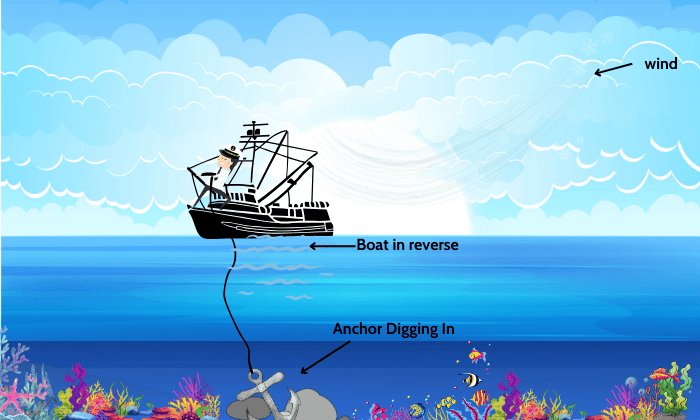“How do boat anchors work?” is a question any boat operator should know the correct answer to. It’s also a topic most of us are undoubtedly interested in, given the sheer uniqueness of watercraft and how their various contraptions work.
An anchor works with its rode (usually composed of a chain and line of rope) to provide weight and resistance that increase as the boat exerts more pull. Most are designed to embed into the seabed, which allows them to hold the vessel in place.
Allow me to explain in greater detail below.
Table of Contents
The Mechanism of How Boat Anchors Work
Even if you know the purpose of an anchor, one can’t help but wonder how such a tool far smaller than the boat can keep it in place. Below is the culmination of what I discovered with regard to anchors used for most boats:
- The boat operator will look for a good spot before either dropping the anchor or triggering the anchor release mechanism for it. Anchors must be heavy enough to act as a weighted end to help in letting out (or paying out) the chain, which is the main force behind its holding power.
Once the chain is paid out, its weight allows it to lie on and create friction with the bottom. This resistance, combined with the ship anchor weight, ensures the entire boat will not drift, even in a storm, although anchors have a specific wind force limit that shouldn’t be exceeded.
- As the anchor and chain work, the flukes dig into the sea bottom when pulled at an angle that usually means the boat is some distance from the anchor.
The fluke designs are widely adapted by the most common types of anchors in a ship or boat, such as Danforth, claw, grapnel, and plow anchors, to name a couple.
- Once it’s time to retrieve the anchor, the boat only needs to position itself directly above it while pulling the line. The one in charge of anchor retrieval needs only to pull and haul it or use a windlass for the job.
- In order for an anchor to work properly both in deep water and in shallow ones, it needs to have the right amount of chain paid out. The safest anchor scope recommendation is at least 5 to 7 times the water depth.
Mechanism Based on Various Scenarios
Every water, weather, and bottom condition varies from place to place. So, how do anchors work in different scenarios? Let’s have a look:
1. Changing Weather Conditions
Normally, if you’re anchoring in calm conditions, you can do with a shorter anchor rode. For rope, it’s often enough for a minimum of 5 feet per foot of water depth, while for chains, you can even settle for just 3 feet per foot of it.
In moderate conditions, the above-mentioned suggestion will do. But, if it gets extra choppier and rougher, you may need to consider bumping it up to at least 8 to 10 times the scope.
2. Various Types of Bottoms
Certain anchors work best for specific bottoms, so you should be familiar with your area’s bottoms to avoid anchoring issues.
- For example, it’s often better to use plow anchors for rocky bottoms because they are designed with protruding parts that will easily latch and lock onto
- Meanwhile, for muddy and sandy ones, the go-to options are often the fluke (aka Danforth) and delta anchors, as you can easily adjust their angle to boost holding power.
Danforths are arguably the most popular modern anchor for their reliability in saltwater boating.
Factors Affecting Anchor Holding
Based on the two scenarios above, it’s already clear that bottom, water, and wind conditions all play a role in an anchor’s holding capability. Besides those, these are the others you should be mindful of:
1. Wind Strength
Stronger winds will inevitably require more resistance and weight to keep the boat from drifting.
2. Tide
The tide directly affects the anchor scope since the rising and lowering of the water depth will cause changes in the anchor chain’s angle. In high tide, the angle becomes shallower, potentially lowering the anchor’s holding power – and vice versa.
3. Anchor Weight
As explained above, this determines holding power. It includes both the rode and the anchor’s own weight.
4. Bottom Conditions
As I’ve pointed out, choosing the wrong type of anchor for water bottoms will only reduce its effectiveness. So, aside from weight, make sure the anchor is designed for the conditions of the water’s bed for effective penetration (and hence, holding power).
5. Vessel Size
Usually, boats deploy only one anchor, especially if it uses the correct anchor type.
However, this is not always the case because vessel size affects the weight and drag needed to keep the watercraft in place. As such, this often dictates the type and number of anchors you need to use as well.
On large ships, there will usually be two anchors, with either one handling the two sides of the vessel. Hence, they’re called port anchors and starboard anchors, respectively.
Conclusion
To recap the answer to “How do boat anchors work?”, it’s due to the interplay between the anchor and the rode, which are often considered as two parts of a whole.
Both create the needed drag and weight to heighten holding power. With the help of flukes, it becomes easier for the boat to maintain its position. Choosing the right anchor based on the factors mentioned above is equally important.

“My intention from the first day establishing Boating Basics Online is to provide as much help as possible for boaters who want to experience a first safe and convenient trip. So feel free to join us and share your beautiful journeys to the sea!”

